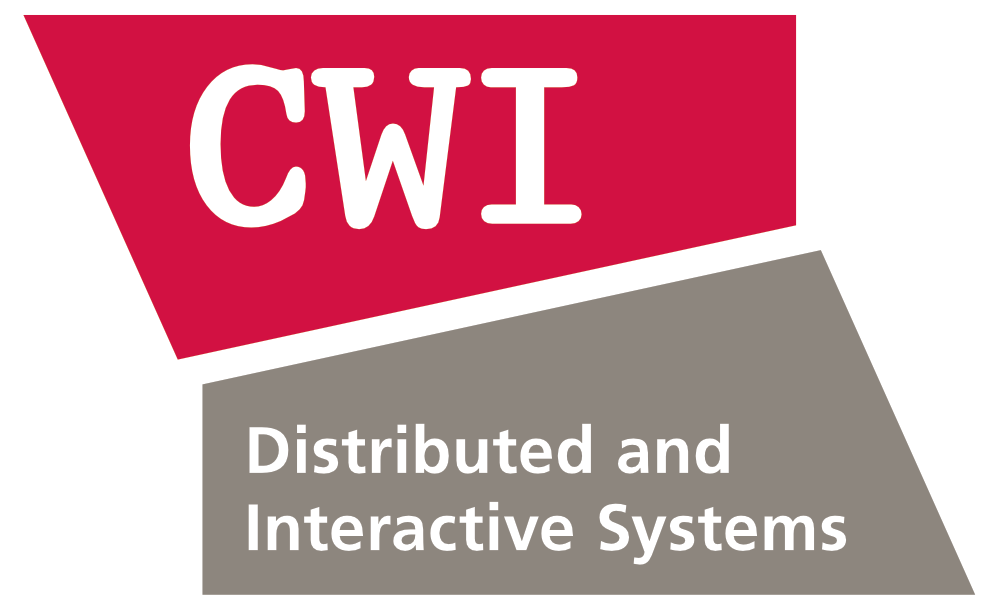Immersive Multimedia Systems
We conduct research to develop and optimize immersive multimedia systems based on the end-user’s perception, behavior and expectations. Our goal is to tailor the systems around the user, increasing the feeling of presence and immersion, and delivering a better experience in remote communication. Understanding and modeling how humans perceive multimedia signals in immersive environments; what are the social and communication cues that impact user experience when a multimedia system is used; how immersiveness affects the user experience; what are users’ expectations when using the system, is key in order to design and develop algorithms and technologies that provide a satisfactory experience to the end-user. Exploiting this knowledge, immersive multimedia systems can be designed and optimized to provide the best performance. For example, user navigation information can be used to optimize the delivery of large volumetric media, thus increasing the users’ satisfaction while adhering to bandwidth constraints.
Read moreAffective Interactive Systems
We conduct research at the intersection of human computer interaction, affective computing, and artificial intelligence. Through the combination of increased computing power, shrinking sensors and actuators, and advanced (on-device) AI models, we are entering into a new technological era of how humans interact with (affect-aware) machines. This is made possible by integrating personal and imperceptible low-cost and low-power sensors and devices onto ourselves and into our everyday environments, which enables new forms of interaction, including: bio-responsive wearables and mobile devices, wireless affective haptics, novel eXtended Reality (XR) social interactions that leverage physiological data, or embodied personal AI assistants that exhibit emotional intelligence.
Read moreQuality of Experience (QoE) and User Experience (UX)
Media consumption has become a ubiquitous part of life. Through evaluating the QoE of media experiences, we aim to quantify the users’ perceived quality of a system or service that affects their experience. What kind of compression technology satisfies users’ expectations for viewing quality? How much delay is tolerant in telecommunication for not disrupting the communication? How much bandwidth does a video stream need to ensure a satisfactory viewing experience? The group does not only focus on QoE, but aims understanding and quantifying the overall user experience, by taking into account personal and situational factors.
Read moreTrustworthy Human-AI Interaction
Encounters with AI-generated content can impact the human experience of algorithms, and more broadly the psychology of HumanAI Interaction (HAI). Providing transparency essentially means disclosing to viewers with clear and understandable information (or labels) about how content was created, and disclosing the role of AI in that process, if any. When dealing with AI-generated or edited content, AI system disclosures can influence users perceptions of media content, whether within news, health information, or other online sources. There is a growing concern that as generative AI becomes more widely used, manipulated content could easily spread false information. As a key step toward mitigating harms and risk, mitigation efforts include ensuring AI system transparency and drawing on guidelines set within the European AI Act. However, even with such policy, much remains uncharted regarding the disclosure of AI systems.
Read moreMedia Production, Consumption and Sharing
Technological advances are resulting in a complex media ecosystem, in which streaming media can reach a variety of end-devices using a heterogeneous set of delivery methods. Such development allows ubiquitous media consumption, where users consume digital content via a connected ecosystem of devices, whenever they want and wherever they are. Still many challenges remain at the production, distribution, and user levels. The group is developing novel mechanisms for group-based consumption, enriching, and sharing of media content. This results in research breakthroughs such as the use of AI and immersive media technologies for improving the way audiences experience media and cultural heritage production tools for facilitating “on demand” temporal media-based compilations for multi-screen consumption of media, communication infrastructures that enable rich media-based shared experiences, optimization algorithms for ubiquitous rendering of media based on the user context and intention, and seminal works on secondary screens and social TV.
Read moreDigital publishing
Many publishers use EPUB to bring digital content to their readers. EPUB is built from Web technologies, but publishing uses the Web for so much more, from everyday matters of communication and marketing to learning management systems and online journals. Nevertheless publications are still not first-class citizens of the Web. EPUB exists in silos, somewhat disconnected from the Web. Long texts make special demands on readers. We expect to read books and publications even while offline. We hope to share publications, save them, keep them. We expect a kind of permanence to publications, which we don’t typically expect of web sites. Publishing@W3C, a dedicated activity at the W3C, works to identify and solve these problems. We want publications on the Web to be more capable, more beautiful, more accessible, and easier.
As part of this activity, a separate Publishing Working Group has been set up at W3C to enable all publications — with all their specificities and traditions — to become first-class entities on the Web. The group aims at the development of Web Publications: a collection of (Web) resources, organized together through a manifest into a single logical work with a default reading order. The group concentrates on the development of a generic framework, with a particular attention to specific publishing areas, like audiobooks, Mangas, or scholarly publications.
Ivan Herman, from CWI, played a seminal role in the creation of Publishing@W3C a few years ago, and is now its technical leader in cooperation with core players of the Web as well as the publishing industries.
Read moreWeb technologies at W3C
It is not an exaggeration to say that the Web has become an essential part of modern society. The presence of researchers has always been seen as essential in the development of the Web and CWI is proud to have contributed actively to this evolution. CWI has been active in the development of HTML, CSS, SMIL, RDF, RDFa, XForms, OWL, R2RML, JSON-LD, SPARQL and many more. Beyond the participation in the relevant Working Groups, members of the DIS group have also acted as Working Group (co-)chairs, as well as activity leads for HTML and the Semantic Web within W3C. Current activities concentrate on:
- the further development of the XForms standard, designing declarative techniques for representing functionality in network-based documents, and applying web-related methods to managing the Internet of Things;
- further development of JSON-LD, creating bridges between the Semantic Web and Web Applications;
- digital publishing and the Web (see separate page for further details).


